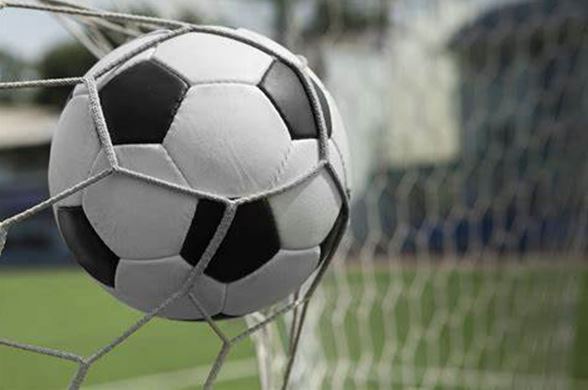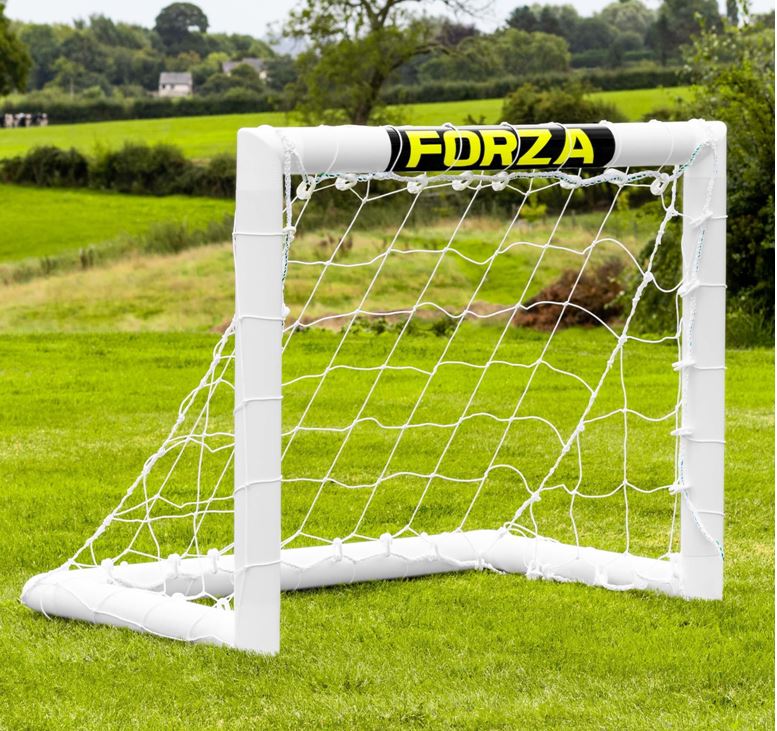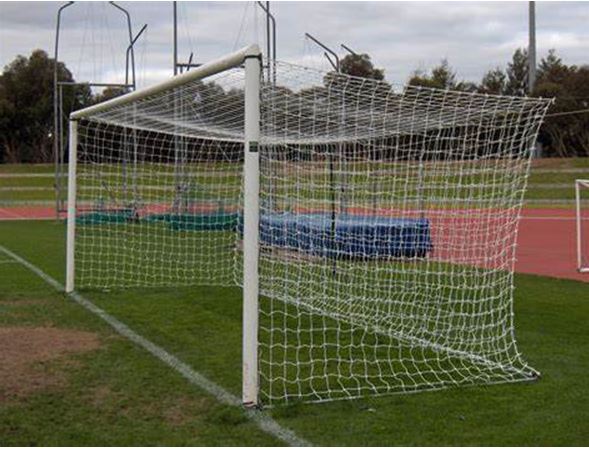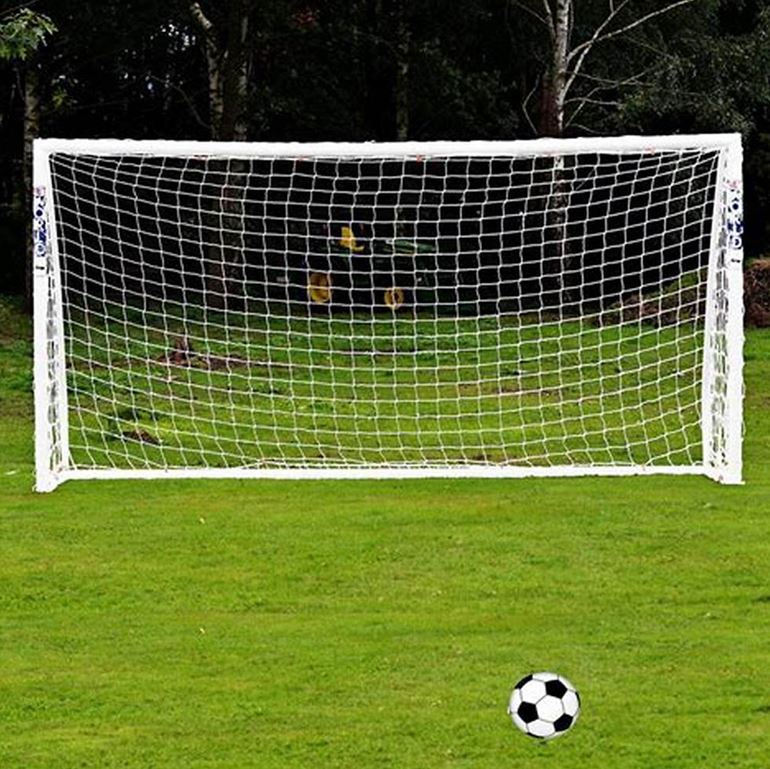
Just like anything else on the market, soccer goals come in a wide variety of shapes and sizes. You have many options. And the best part is that there is one for everyone, whether you just want something your kids can play in the backyard or you want something professional for your team.
Soccer goals are usually made of either metal or plastic and this will largely impact the price and purpose of your soccer goal. This will affect their performance as well. You can see more on soccer goal regulations here.
Here are some characteristics of plastic soccer goals:
- They are affordable – definitely less expensive than metal ones
- They are light – anyone can carry them around without much hassle
- They are portable – easy to transport wherever you need them to be
- They are easy to install – plastic goals use anchors to install into the grass which makes it simple
- They are usually best for young players, players in training and just for fun
- They are easy to store – you can fold, adjust or collapse them to make them fit into any space
- They are suitable for low-impact play – while they may not be as durable as metal, they are still a good choice for new players and low-use play

Here are some characteristics of metal or aluminum soccer goals:
- They have a high-quality design – metal goals are designed for serious players and professional play
- They are more expensive than plastic – prices are higher, but there are also cheaper options in the metal soccer goal category
- They have great performance and are very durable – they can last for years and resist all sorts of impact
- They are designed for permanent installation – once you pick a place for them, you will likely not be able to move them around
- They are good for high impact play – and they are able to take it without breaking
- They are perfect for leagues, clubs, schools or any sorts of tournaments
- They are available in various shapes and sizes – you can pick a look that works for you
The Difference Between Metal and Plastic Soccer Goals

Soccer goals are created in many different ways depending on the age of players, skills of players and how they are to be used. Some of them have a simple design while some have a more complex design. What’s important is to understand the styles and know which one is best for your specific needs.
If you want to know more about official goal types and sizes, you can check them out here: https://www.newitts.com/blog/what-size-football-goal-should-i-go-for?country=/
Here are some of the traits of soccer goals with no depth:
- Design is simple – they have one top crossbar and a net that hangs and connects to the sides and the back. There’s a 45-degree angle.
- They are light and portable
- They have no room for the goalie to defend the goal within the goal, they will likely stand in front of it
- There’s little room within the goal
Here are some of the characteristics of goals with depth:
- The design is usually more complex – a top bar and two bars which hold the 90-degree angle to the front and back bars which extend a few feet into the net
- There’s more room within the net and it allows the player to enter the goal. It also prevents the goalie from tangling inside the goal and the goalie has better performance
- They can be either permanent or portable
- They are made with heavy and high-quality materials which makes them sturdier, but also less portable
- They are best for young players and competitions
Here are some characteristics of box goals:
- They are big, rectangular and designed to include a box frame which has all 90-degree angles and the net is looped over this construction
- It allows for a ton of space within the goal
- It’s usually used in professional competitions, for big soccer clubs and so on
- They are made with high-quality metal and they are usually permanent, but also could be found in portable versions
How to know what goal to pick?

Anyone can play soccer with any kind of goal. The size really doesn’t matter that much. However, if you want to play in a league, you need to practice on a goal that’s right for you and there are specific sizes that fit different player ages, such as the ones you can find on the Sports Triumph’s soccer goals review. There are different leagues across the country and all of these fit different ages and they need different goal size rules. This is why it’s important to know what kind of goal you need, depending on the size, age and so on.
Here are some recommended goal sizes based on age and field.
- For ages 6 to 7, and field 15 yards W and 20 yards L the goal size should be 4’ H and 6’ W
- For children aged 8, and field 30 yards W and 50 yards L, the goal should be 6.5’ H and 12’ W
- For children aged 9, and field 35 yards W and 50 yards L, the goal should be 6.5′ H and 18.5′ W
- For children aged 10, the field in the range of 45 x 55 to 70 x 80, the goal should be 13 6.5′ H and 18′ W or 7’H and 21′ W
- For children aged 13 or more (including adults), the field in the range of 50 x 100 to 80 x 120, the goal should be 8′ H and 24′ W
All in all, you need to consider your needs. These include the range of prices you are willing to pay, the purpose of the goal, the size of the goal you need, the age you need it for and so on. When you consider all of this, you can make an informed decision on purchasing a goal.
